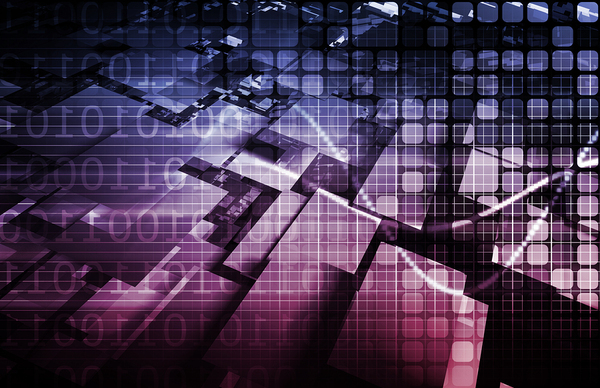The digital landscape and its capacity to disrupt is very much at the forefront of technology news. Yet the digital potential isn’t used by every sector. According to researchers in the Harvard Business Review, the U.S. economy uses only 18% of its digital potential.

There’s an increasing digital divide in sectors.
Indeed, the authors argue that there is a growing gap between companies and sectors that are harnessing the productivity gains and innovation available via digital means and those that aren’t. While the term “digital divide” is most often used to refer to the gap between consumers with digital fluency and those without, it is arguable that a corporate digital divide exists as well.
Moreover, the HBR finds that the companies and sectors that have made the most use of the digital world have outpaced the others by two to three times in rising profit margins and productivity in the last two decades. The authors believe that if all companies used digital at its full potential, it would add $2 trillion to the U.S. economy.
Winners and Losers
This is important business strategy news considering that, in the words of a firm who offer digital consulting services, McKinsey & Company, “Digital capabilities increasingly will determine which companies create or lose value.”
Which sectors harness digital capabilities the most? According to the HBR, technology leads the list, followed by media companies and financial services.
This may be no surprise given that tech companies are highly likely to use the very technology that comes out of their sector. Though the authors don’t specify names, media companies like Netflix wouldn’t be possible without digital streaming. It’s hard to think of a media company that doesn’t use digital distribution, even if they started with the movie camera or the printing press. Financial services are increasingly moving to online consumer provision with mobile apps and online banking. Back offices, as well, are increasingly digitized to save costs.
Which sectors are falling behind? Government, healthcare, local services, hospitality, and construction.
IoT to the Rescue?
These are large sectors. It is sobering to realize how many important areas are not keeping pace.
The HBR authors offer some hope that the Internet of Things (IoT) might work as a digitization mechanism for some lagging sectors of the economy. Technology, media, and financial services lead the pack in part because their customer-facing sides have adopted digital as a way to appeal to customers.
IoT networks behind the scenes, linking contractors and suppliers, for example.
The increasing penetration of the IoT can enhance one of the factors McKinsey highlights as major opportunities for digital leaders going forward, which is working on increasing and improving interactions between customers, stakeholders, suppliers, and employees.
McKinsey also points out that digital companies have more opportunity to harness data from social media and the IoT and to use that data to drive their business performance. The creation of algorithms may be very desirable to certain lagging sectors, such as healthcare and hospitality.
Will lagging sectors use the IoT to drive their business forward? Or will leading sectors use it even more? Stay tuned.
